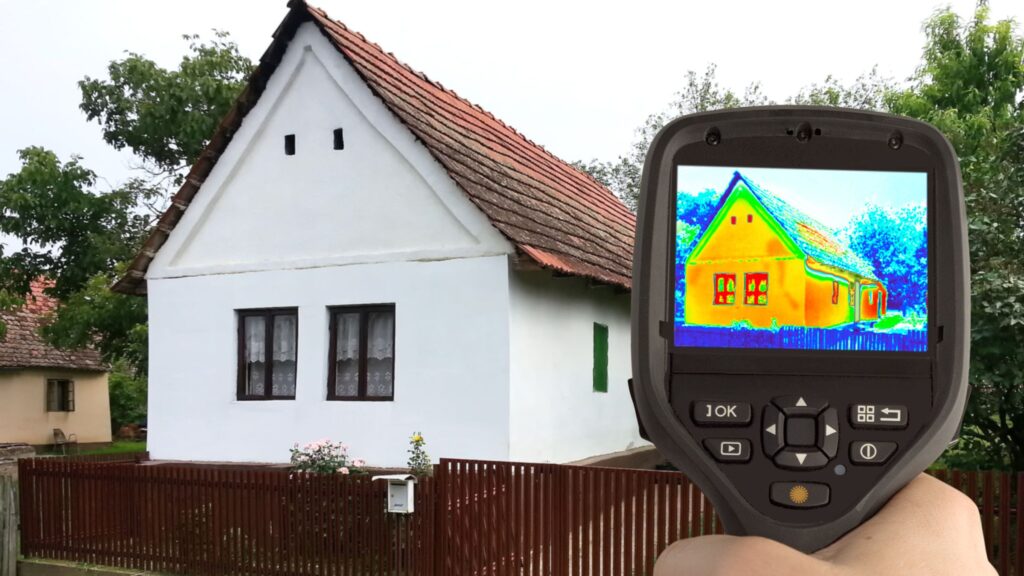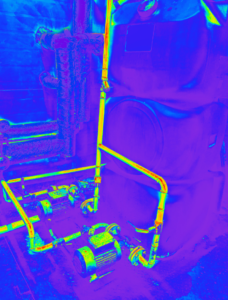Is thermal imaging worth it for a home inspection ?

Introduction
Is thermal imaging worth it for a home inspection ?
As homeowners, it is essential to ensure that our homes are safe, secure, and efficient. While regular inspections and maintenance can help to resolve most problems, conventional visual inspections are often not enough to detect underlying issues. This is where thermal imaging comes in- an innovative technology that has revolutionized the way homes are inspected.
What is Thermal Imaging Inspection ?
In simple terms, thermal imaging or thermal infrared imaging is a non-destructive, non-invasive inspection technique that visualizes temperature differences in objects, surfaces, and environments. By using specialized cameras that detect infrared radiation, it is possible to identify areas of heat loss, moisture intrusion, electrical faults, and other anomalies that may not be visible to the naked eye. These cameras can detect temperature differences as small as 0.2 degrees Celsius and can provide detailed thermal images in real-time.
Benefits of Thermal Imaging
However, the question arises- is thermal imaging worth it for home inspection? Let’s explore the benefits and limitations of thermal imaging and its relevance in home inspections.
Benefits of Thermal Imaging for Home Inspections
- Detects Hidden Issues
One of the significant benefits of thermal imaging is that it can identify hidden issues that may not be visible through conventional visual inspections. For example, thermal imaging can detect areas of heat loss or air leaks that may contribute to increased energy bills. It can also identify the presence of moisture behind walls, which can lead to mold growth, and detect electrical hotspots that can potentially lead to a fire.

- Saves time and Money
Thermal imaging can identify issues quickly and efficiently, saving time and money in the long run. For example, a thermal imaging scan can detect a small water leak before it becomes a significant problem, allowing for prompt repairs. This can save homeowners thousands of dollars in repair costs, prevent damage to property and possessions, and maintain the value of the home.
- Enhances Energy Efficiency
Thermal imaging can identify areas of heat loss in a home. This information can be used to improve insulation, seal air leaks, and make other energy-efficient upgrades that can save homeowners money in the long run. It also helps to improve the overall comfort of the home by ensuring that heat is distributed evenly throughout the house.
- Provides Comprehensive Inspection
Thermal imaging can provide a more comprehensive inspection of a property than conventional visual inspections. It can reveal issues that are not apparent to the naked eye, such as the presence of pests or insulation defects. It can also provide detailed images that can be used to explain the condition of the property to potential buyers or insurance companies.
Limitations of Thermal Imaging
Limitations of Thermal Imaging for Home Inspections
- Does Not Provide a Complete Picture
While thermal imaging can be incredibly useful, it is not a perfect technology. It cannot provide a complete picture of the condition of a property but rather identifies potential issues that need further investigation. This means that while thermal imaging can detect anomalies, it cannot determine the root cause of the problem.
- Requires Expertise
Thermal imaging requires expertise to interpret the images accurately. It takes training and experience to understand the nuances of thermal imaging and identify potential issues. A qualified thermographer should be used to carry out a thermal imaging scan.
- Can Be Affected by External Factors
Thermal imaging can be affected by external factors such as weather conditions and ambient temperature. For example, thermal imaging may not be effective in extremely hot or cold weather conditions or if there is significant ambient heat or cold within the property.
- Can Be Costly
Compared to a traditional visual inspection, thermal imaging can be more expensive. However, the benefits of thermal imaging often outweigh the additional costs, especially when it comes to identifying hidden issues that can potentially cause significant damage and cost in the long run.
So, Is Thermal Imaging Worth it for a Home Inspection?
The answer is- it depends on the situation. If you suspect an issue with your property, such as a water leak or electrical fault, then thermal imaging is certainly worth considering. It can help to identify the issue quickly and accurately, potentially saving you thousands of dollars in repair costs.
Similarly, if you are looking to purchase a property, a thermal imaging scan can provide peace of mind by identifying any potential issues that may not be visible to the naked eye. This information can be used to negotiate the purchase price or to make essential repairs before moving into the property.
However, if you have a new property or have recently carried out significant renovations, thermal imaging may not be necessary. In this case, a visual inspection may be sufficient to identify any issues that may arise.
Final Thoughts
Thermal imaging technology has revolutionized the way we inspect and analyze properties. It offers several benefits in identifying and diagnosing potential issues, saving money, and improving energy efficiency. However, there are limitations to the technology, and it is not always necessary or appropriate. Therefore, if you are considering a thermal imaging scan for your property, it is essential to consult with a qualified professional who can guide you in the right direction. Overall, thermal imaging is a valuable tool that can provide a more comprehensive understanding of the condition of a property, making it an excellent investment

With a degree in Electrical Engineering and years of hands-on experience in the tech industry, passionate to provide readers with insightful reviews. From smartphones and laptops to smart home devices and emerging technologies, he navigates the ever-evolving tech landscape, offering in-depth analyses and honest opinions.

![3d_printed_art_01[1]](https://techreviewly.com/wp-content/uploads/2025/08/3d_printed_art_011-300x225.jpeg)
![a_women_wearing_a_smart_watch_01[1]](https://techreviewly.com/wp-content/uploads/2025/08/a_women_wearing_a_smart_watch_011-300x169.jpeg)






